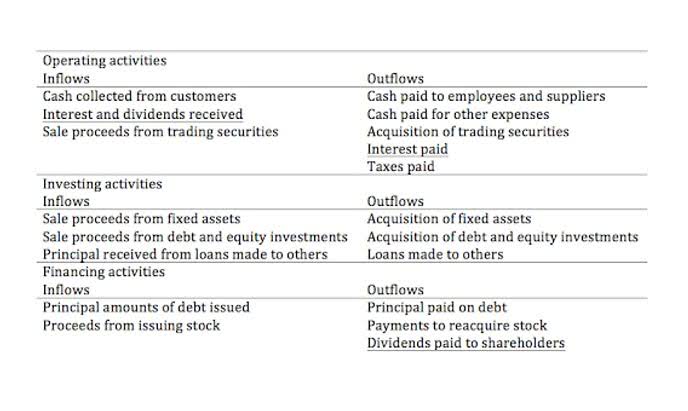
Subtract the amount by which you need to replenish the account from the total amount of your vouchers. A negative result represents a cash short amount, while a positive number represents a cash over amount. The cash overage/shortage account is an expense account in the income statement of the business. Cash overages are normally recorded in a separate income statement expense account often referred to as the cash over/short account. The cash over and short account is the type of miscellaneous account in the income statement. If its balance is on the debit side, it is usually presented in the miscellaneous expenses.
Boost Your Financial Metrics With HighRadius’ Treasury And Risk Management Software

Note that the entry to record replenishing the fund does not credit the Petty Cash account. In this case, the cash needed to get back to $100 ($100 fund – $7.40 petty cash on hand) of $92.60 equals the total of the petty cash vouchers. To permit these cash disbursements and still maintain adequate control https://x.com/BooksTimeInc over cash, companies frequently establish a petty cash fund of a round figure such as $100 or $500. The petty cash account is a current asset and will have a normal debit balance (debit to increase and credit to decrease). Here is a video of the petty cash process and then we will review the steps in detail.
- For hospitals, a days cash on hand ratio is recommended to be anywhere between 157 – 273 days.
- If we have an overage of cash, we record the overage as a credit, and this has the same impact as if we are recording revenue.
- An automated cash forecasting solution offers scenario analysis software that helps create and tweak what-if scenarios over base forecasts and compare multiple scenarios with one another.
- A firm should note instances of cash variances in a single, easily accessible account.
- When we give too much change to customers, it means that we make change more than it should be.
- Analyzing the trend over multiple time periods will offer a more accurate assessment of liquidity management and operational efficiency.
Cash shortage journal entry

In most cases, customers will most likely to dispute a shortage of change. Therefore, the cash over and short is usually at debit balance which represents an expense. This expense is treated as a miscellaneous expense and presented in the income statement as a general and administrative expense section. However, if the balance is at credit, it is treated as miscellaneous revenue instead. This term pertains primarily to cash-intensive businesses in the retail and banking sectors, as well as those that need to handle petty cash. If a cashier or bank teller errs by giving too much or too little change, for example, then the business will have a “cash short” or “cash over” position at the end of the day.
Income Statement
- Generally, the amounts in the account Cash Short and Over are so small that the account balance will be included with other insignificant amounts reported on the income statement as Other Expenses.
- To determine which accounts to debit, an employee summarizes the petty cash vouchers according to the reasons for expenditure.
- Cash overages are normally recorded in a separate income statement expense account often referred to as the cash over/short account.
- At all times, the employee responsible for petty cash is accountable for having cash and petty cash vouchers equal to the total amount of the fund.
- These challenges pose a constant threat to working capital erosion and lower liquidity even for businesses with substantial revenues or reserves.
- A petty cash voucher is a document or form that shows the amount of and reason for a petty cash disbursement.
Alternatively, if there had been too much cash in the petty cash box (a rare condition indeed!), the entry would be reversed, with a debit to cash and a credit to the cash over and short account. The cash over and short account is an expense account, and so is usually aggregated into the “other expenses” line item in the income statement. A larger balance in the account is more likely to trigger an investigation, while it may not be cost-effective to investigate a small balance. A sample presentation of the Other Expenses line item in an income statement appears in the following exhibit.
Journal Entry for Cash Shortage
- For example, imagine that the Galaxy’s Best Yogurt runs out of milk one evening.
- In this case, we need to make the journal entry for cash shortage at the end of the day or when we make the replenishment of petty cash if there is less cash on hand than the amount it is supposed to be.
- However, a very high ratio also means that a business has an inefficient capital allocation.
- With our treasury and risk solutions, treasury professionals gain instant, personalized insight into their cash positions with unparalleled global visibility.
- At this point, the petty cash box has $75 to be used for small expenses with the authorization of the responsible manager.
- For example, the petty cash custodian may sometimes find themselves having less cash on hand as a result of the total cash plus receipts does not add up to the total amount of the established petty cash fund.
Most retailers’ accounting systems have a cash over short account setup because they generally deal with cash sales everyday. Over and short—often called “cash over short”—is an accounting term that signals a discrepancy between a company’s reported figures (from its sales records or receipts) and its audited figures. The is cash short and over an expense term also is the name of an account in a company’s general ledger—the cash-over-short account. The account stores the amount by which the actual ending cash balance differs from the beginning book balance of cash on hand, plus or minus any recorded cash transactions during the period. If the management at a later date decides to decrease the balance in the petty cash account, the previous entry would be reversed, with cash being debited and petty cash being credited. After calculation, even though the total petty cash expenses are only $82 ($45+$25+$12), we need to replenish $85 ($100-$15) as we have only $15 cash on hand left.
Calculate the Sum of Vouchers

A firm should note instances of cash variances in a single, easily accessible account. This cash-over-short account should be classified as an income-statement account, not an expense account because the recorded errors can increase or decrease a company’s profits on its income statement. Likewise, it can save us a bit of time and effort by including both cash shortage and cash overage into only one account.
Accounting Ratios
In contrast, let’s assume that during the cash count, the actual cash from the cash sales is $495 instead of $510. Cash Over and Short is an income statement account used to track differences in cash collections from what is expected and what is actual. It is used in businesses that use cash in day-to-day operations, for example, retail stores and restaurants. Cash Over and Short reconciles what is in the cash drawer vs. what the cash register record says should be in the cash drawer. I rang up a $95 pair of yoga pants correctly for $95, but I miscounted the cash I received for the pants. The customer unwittingly gave me $96 for the purchase, an error we both failed to catch.

Thus, using a petty cash fund avoids the need for making many entries for small amounts. Only when the fund is reimbursed, or when the end of the accounting period arrives, does the firm make an entry in the journal. Assume the same situation except Tom only receives $99 instead of $101. Now cash is debited for $99, cash over and short is debited for $1, and the sales account is credited for $100. Let’s assume Tom rang up a $100 pair of running shoes for $100, but he miscounted the cash received for the shoes.

Cash over and short journal entry
They will have to borrow https://www.bookstime.com/ $50 million and use $50 million of their cash to do this. They want to know the effect on overall cash if they start the project next month (Scenario 1) or if the project is delayed 45 days due to bank approvals (Scenario 2). For instance, industries with long collection cycles or high capital expenditures would maintain a higher DCOH.